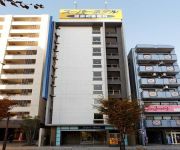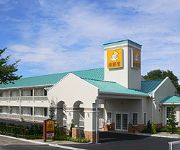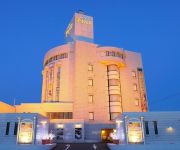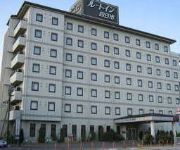Safety Score: 2,8 of 5.0 based on data from 9 authorites. Meaning we advice caution when travelling to Japan.
Travel warnings are updated daily. Source: Travel Warning Japan. Last Update: 2024-08-13 08:21:03
Delve into Daiocho
The district Daiocho of in Kuwana-shi (Mie-ken) is a district located in Japan about 175 mi west of Tokyo, the country's capital town.
In need of a room? We compiled a list of available hotels close to the map centre further down the page.
Since you are here already, you might want to pay a visit to some of the following locations: Kuwana, Yatomi, Tsushima, Aisai and Yokkaichi. To further explore this place, just scroll down and browse the available info.
Local weather forecast
Todays Local Weather Conditions & Forecast: 15°C / 59 °F
| Morning Temperature | 11°C / 52 °F |
| Evening Temperature | 15°C / 58 °F |
| Night Temperature | 14°C / 56 °F |
| Chance of rainfall | 0% |
| Air Humidity | 54% |
| Air Pressure | 1016 hPa |
| Wind Speed | Moderate breeze with 9 km/h (6 mph) from South-East |
| Cloud Conditions | Clear sky, covering 0% of sky |
| General Conditions | Sky is clear |
Friday, 22nd of November 2024
15°C (60 °F)
12°C (54 °F)
Few clouds, moderate breeze.
Saturday, 23rd of November 2024
11°C (52 °F)
9°C (48 °F)
Few clouds, fresh breeze.
Sunday, 24th of November 2024
13°C (56 °F)
11°C (52 °F)
Sky is clear, gentle breeze, clear sky.
Hotels and Places to Stay
(RYOKAN) Nabetagawa
New Heartpia Onsen Hotel Nagashima
Kuwana Park Hotel
Sanko Inn Kuwana Eki Mae
Super Hotel Kuwana Ekimae
Hotel S Value Kuwana
Family Lodge Hatagoya Kuwana Nagashima
Fine Garden Kuwana
Business Hotel BL Kuwana
Hotel Route Inn Yokkaichi
Videos from this area
These are videos related to the place based on their proximity to this place.
Trains in Japan ; 近鉄名古屋 ; Kintetsu Nagoya at Kuwana
A variety of Kintetsu Nagoya trains arriving and departing Kuwana station.
IAEI KUWANA - 5 Anos
Video comemorativo do aniversário de 5 anos da Igreja Aliança Evangélica Internacional em Kuwana.
Kuwana Hanabi Taikai - Prologue
Kuwana Hanabi Taikai or Kuwana Fireworks Festival is held once a year during the summer holidays. Fun! 桑名市の花火大会 バローの屋上から。
Fireworks in Kuwana, Japan
An excerpt from the annual summer fireworks display in Kuwana city, Mie prefecture, Japan. July 24th, 2010.
Kuwana Hanabi Taikai
Kuwana Hanabi Taikai or Kuwana Fireworks Festival is held once a year during the summer holidays. Fun! 桑名市の花火大会 バローの屋上から。
Kuwana Hanabi Taikai 第三
Kuwana Hanabi Taikai or Kuwana Fireworks Festival is held once a year during the summer holidays. Fun! 桑名花火大会 ろっかえんの近くのバローの屋上から。
Kuwana Hanabi Taikai Beginning
Kuwana Hanabi Taikai or Kuwana Fireworks Festival is held once a year during the summer holidays. Fun! 桑名市の花火大会 バローの屋上から。
Videos provided by Youtube are under the copyright of their owners.
Attractions and noteworthy things
Distances are based on the centre of the city/town and sightseeing location. This list contains brief abstracts about monuments, holiday activities, national parcs, museums, organisations and more from the area as well as interesting facts about the region itself. Where available, you'll find the corresponding homepage. Otherwise the related wikipedia article.
Steel Dragon 2000
Steel Dragon 2000 is a roller coaster at Nagashima Spa Land amusement park in Mie Prefecture, Japan. Built by Morgan Manufacturing, this coaster opened, appropriately, in 2000—"The Year of the Dragon" in Asia. It debuted only months after Millennium Force at Cedar Point, and surpassed that as the world's tallest complete-circuit coaster. It lost these records in height in 2003 when Top Thrill Dragster opened at Cedar Point.
Nagara River
The Nagara River has its source in the city of Gujō, Gifu Prefecture, and its mouth in the city of Kuwana, Mie Prefecture, Japan. Along with the Kiso River and Ibi River, the Nagara River is one of the Kiso Three Rivers of the Nōbi Plain. Previously, the river was named Sunomata River (墨俣川 Sunomata-gawa). With a length of 166 km, it drains an area of 1,985 square kilometres in the Chūbu region and empties into Ise Bay. The government of Japan classifies it as a Class 1 river.
Nagashima Spa Land
is a major amusement park in Kuwana, Mie Prefecture, Japan. It features several roller coasters, thrill rides, and kid rides, a giant Ferris wheel, and a water park. As of 2011, Nagashima Spa Land is the 17th most visited amusement park in the world.
Kiso River
The Kiso River is a river in Japan roughly 193 km long, flowing through the prefectures of Nagano, Gifu, Aichi, and Mie before emptying into Ise Bay a short distance away from the city of Nagoya. It is the main river of the Kiso Three Rivers and forms a major part of the Nōbi Plain. The valley around the upper portion of the river forms the Kiso Valley. Parts of the Kiso River are sometimes referred to as the Japan Rhine because of its similarities to the Rhine in Europe.
Ibi River
The Ibi River is a tributary of the Kiso River located in Gifu and Mie Prefectures in Japan. Along with the Nagara and Kiso rivers, the Ibi is the third of the Kiso Three Rivers of the Nōbi Plain. It is one of Japan's first-class rivers. The former Tōkaidō post station of Kuwana-juku was located on the western banks of this river during the Edo period.
Kintetsu Yatomi Station
Kintetsu Yatomi Station is a railway station on the Kintetsu Nagoya Line located in Yatomi, Aichi Prefecture, Japan. It is located 16.1 kilometers from the terminus of the Nagoya Line at Kintetsu Nagoya.
Kintetsu Nagashima Station
is a railway station on the Kintetsu Nagoya Line in Kuwana, Mie Prefecture, Japan, operated by the private railway operator Kintetsu. Kintetsu Nagashima Station is 19.5 rail kilometers from the terminus of the line at Kintetsu Nagoya Station.
Masuo Station (Mie)
is a railway station on the Kintetsu Nagoya Line in Kuwana, Mie Prefecture, Japan, operated by the private railway operator Kintetsu. Masuo Station is 24.8 rail kilometers from the terminus of the line at Kintetsu Nagoya Station.
Kuwana Station
Kuwana Station is a railway station in Kuwana, Mie Prefecture, Japan.
Ise-Asahi Station
is a railway station on the Kintetsu Nagoya Line in Asahi, Mie District, Mie Prefecture, Japan, operated by the private railway operator Kintetsu. Ise-Asahi Station is 27.4 rail kilometers from the terminus of the line at Kintetsu Nagoya Station.
Kawagoe Tomisuhara Station
is a railway station on the Kintetsu Nagoya Line in Kawagoe, Mie District, Mie Prefecture, Japan, operated by the private railway operator Kintetsu. Kawagoe Tomisuhara Station is 30.0 rail kilometers from the terminus of the line at Kintetsu Nagoya Station.
Kintetsu-Tomida Station
Kintetsu-Tomida Station is a railway station on the Kintetsu Nagoya Line in Yokkaichi, Mie, Japan, operated by the private railway operator Kintetsu. Kintetsu Tomita Station is 31.6 rail kilometers from the terminus of the line at Kintetsu Nagoya Station and is also a terminus for the Sangi Railway’s Sangi Line.
Yatomi Station
Yatomi Station is a railway station in Yatomi, Aichi Prefecture, Japan. It is located 16.4 rail kilometers from the terminus of the Kansai Line at Nagoya Station and is a terminal station for the Meitetsu Bisai Line. The station's elevation is 0.93 m below sea level, the lowest among all above-ground stations of JR Group. This is one of the few stations operated by Meitetsu that does not accept Tranpass magnetic fare cards.
Nagashima Station
Nagashima Station is a railway station in Kuwana, Mie Prefecture, Japan, on the Kansai Main Line. It is located 19.6 rail kilometers from Nagoya Station, and is operated by Central Japan Railway Company (JR Central).
Asahi Station (Mie)
Asahi Station is a railway station in Asahi, Mie Prefecture, Japan, on the Kansai Main Line. It is located 28.5 rail kilometers from Nagoya Station, and is operated by Central Japan Railway Company (JR Central).
Tomida Station
Tomida Station is a railway station in Yokkaichi, Mie Prefecture, Japan, on the Kansai Main Line. It is located 33.0 rail kilometers from Nagoya Station, and is operated by Central Japan Railway Company (JR Central).
Nishi-Kuwana Station
Nishi-Kuwana Station is a railway station in Kuwana, Mie Prefecture, Japan. It is the origin of the Hokusei Line.
Gonosan Station
Gonosan Station is a train station on the Meitetsu Bisai Line located in Yatomi, Aichi Prefecture, Japan. It is located 2.5 kilometers from the terminus of the Bisai line at Yatomi.
Harima Station
Harima Station is a train station in Kuwana, Mie Prefecture, Japan
Shimo-Fukaya Station
Shimo-Fukaya Station is a train station in Kuwana, Mie Prefecture, Japan
Shimo-Noshiro Station
Shimo-Noshiro Station is a train station in Kuwana, Mie Prefecture, Japan
White Cyclone
is a wooden roller coaster at Nagashima Spa Land in Mie Prefecture, Japan. At 1,700 m in length, White Cyclone is the third longest wooden roller coaster in the world, and is the longest wooden roller coaster outside of the United States. Despite its length, White Cyclone is still considerably shorter than the 2,479 m Steel Dragon 2000, the world's longest steel roller coaster, which is also at Nagashima Spa Land.
Looping Star (Nagashima Spa Land)
Looping Star is a roller coaster which is located at Nagashima Spa Land in Mie, Japan. It was built by Anton Schwarzkopf in 1982. It is identical to other Looping Star roller coasters in different Amusement Parks. It was built two years after the Shuttle Loop rollercoaster and the same park was built. The trains on Looping Star use a single lap bar to hold riders in the seat.
Ultra Twister (Nagashima Spa Land)
Ultra Twister is a roller coaster located at Nagashima Spa Land in Mie Prefecture, Japan. Built by TOGO, which is also one of the few ultratwister models still in operation in Japan. It is almost identical to the other Ultra Twister models in the United States except it has a vertical chain lift hill and an 84 degree drop. Other ones had a steep lift hill and drop as well. Ride attendants put the fiberglass shells down to lock in their harnesses.
Tatsuta polder sluice gates
The Tatsuta polder sluice gates were constructed in 1902 during works on the Kiso River in Yatomi, Aichi Prefecture, Japan. They are an example of western hydraulic engineering technology adopted during the Meiji period.


















